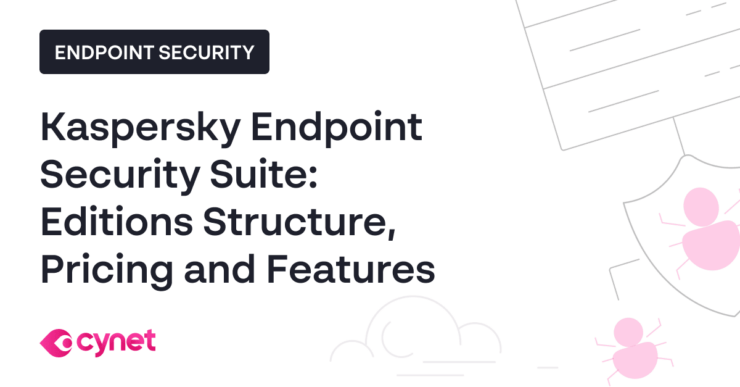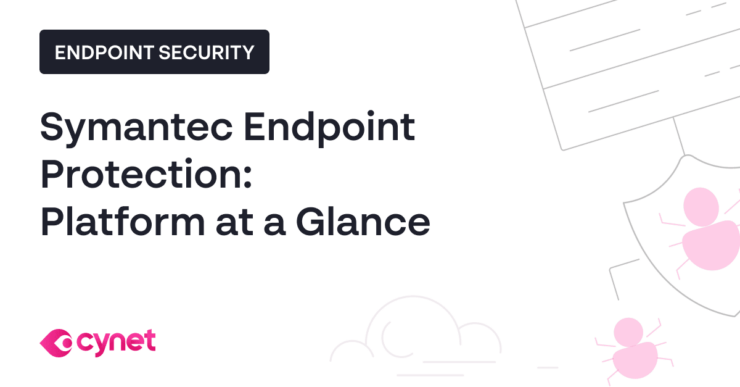October 3, 2023
Last Updated:
August 19, 2024
What Is Bitdefender XDR (Bitdefender GravityZone)?
Bitdefender XDR (Extended Detection and Response), is a component of Bitdefender GravityZone, an endpoint protection platform that protects against advanced cyber threats. XDR provides a set of tools to detect, prevent, and respond to cyber threats, leveraging machine learning and advanced analytics.
Bitdefender XDR is a cybersecurity platform that combines multiple security technologies into a single package. It’s designed to provide visibility across endpoints, network traffic, and cloud environments, allowing for rapid detection and response to threats.
Implementing Bitdefender XDR in a security organization enables security teams to take a more proactive approach to security. Bitdefender XDR helps security professionals identify sophisticated threats across different parts of the IT environment and rapidly respond to them.
This is part of a series of articles about endpoint security.
Key Features of Bitdefender GravityZone XDR
1. Multi-Layered Prevention
Bitdefender XDR’s multi-layered prevention uses multiple technologies and techniques including traditional antivirus, advanced anti-malware, exploit prevention, application security, cloud security, network security, and more. This approach is effective at preventing both known and unknown threats across the entire IT environment, not just focusing on endpoints.
2. Automatic Detection
Using machine learning algorithms, Bitdefender XDR is capable of identifying and detecting threats without any human intervention. This means that even if a threat hasn’t been seen before, Bitdefender XDR can still identify it based on its behavior and other characteristics.
While traditional antivirus solutions rely on signature-based detection, Bitdefender XDR’s behavior-based detection capabilities allow it to identify unknown threats.
3. Incident Response
When a threat is detected, Bitdefender XDR can take automated response actions, which can be configured to take specific actions when a threat is detected. For example, an automatic response action might involve isolating an infected system from the network to prevent a threat from spreading.
Additionally, Bitdefender XDR provides detailed incident reports, which provide crucial information about the threat and its impact. These reports can be used to understand the nature of the threat, assess the damage, and plan an effective response.
4. Visualization and Threat Analytics
Bitdefender XDR provides visualization and threat analytics capabilities which allow security teams to understand the nature of a threat and its potential impact. By providing a view of the threat landscape, Bitdefender XDR helps security teams make informed decisions about how to respond.
The threat analytics feature, for example, provides a timeline of events related to a detected threat. This can help security teams understand how a threat entered the system, what actions it took, and how it was ultimately neutralized.
Related content: Read our guide to Bitdefender EDR
Bitdefender XDR Sensors
XDR provides several sensors that allow it to gather data from across the IT environment, giving it an advantage over traditional endpoint protection and endpoint detection and response (EDR) solutions. The solution uses four main types of sensors:
Productivity Applications Sensor
The Productivity Applications Sensor monitors activity in common productivity applications like Microsoft Office and Adobe Reader, looking for signs of malicious activity. The Productivity Applications Sensor is designed to catch threats that might otherwise be missed. For example, it can detect if a malicious macro is being run in a Word document, or if a PDF is attempting to exploit a known vulnerability.
Cloud Sensor
Many organizations rely heavily on cloud-based services and applications. To enhance security in these environments, Bitdefender XDR includes a Cloud Sensor feature. The Cloud Sensor provides visibility into cloud-based workloads, which can often be a blind spot for traditional endpoint protection solutions.
Cloud Sensor extends security visibility and control to cloud-based environments, ensuring the solution can detect and respond to threats in the cloud just as it does to threats on on-premise endpoints.
Identity Sensor
The Identity Sensor is designed to monitor and analyze user behavior. For example, if a user’s behavior suddenly changes—such as logging in at unusual hours or attempting to access sensitive data—the Identity Sensor can detect this and alert the relevant stakeholders.
The Identity Sensor is also capable of gathering and analyzing data from various sources, such as endpoints or the network, providing a view of the user’s activities across silos.
Network Sensor
The Network Sensor is designed to monitor network traffic. By doing so, it can identify malicious activities or anomalies that may indicate a security threat. This feature is particularly useful in detecting advanced persistent threats (APTs), which are often difficult to identify using traditional security solutions.
The Network Sensor also provides information about network activities, making it easier for security teams to understand the nature of a threat and respond accordingly. This feature supports automated response capabilities, allowing for rapid containment and remediation of threats.
Bitdefender GravityZone XDR: Challenges and Disadvantages
While Bitdefender XDR offers numerous benefits, it is not without its challenges and disadvantages. Understanding these can help you make a more informed decision about whether this platform is the right fit for your organization.
Performance Impact
One of the potential challenges associated with Bitdefender XDR is the impact on system performance. While the platform is designed to operate efficiently, it can sometimes consume significant system resources, which may slow down other operations. This is especially true during intensive activities such as full system scans or when dealing with large volumes of data.
Difficulties in Integrating with Non-Standard or Legacy Systems
Another potential challenge with Bitdefender XDR is the difficulty in integrating it with non-standard or legacy systems. While the platform is designed to integrate with other IT systems and security tools, many users note that integration with legacy systems can be difficult. This might lead to additional costs and complexities in terms of implementation and support.
Feature Limitations
Despite its extensive feature set, Bitdefender XDR does have limitations. For example, while the platform offers detection and response capabilities, it may not provide the same level of depth in other areas, such as threat intelligence or vulnerability management.
Learn more in our detailed guide to Bitdefender security
Cynet: Ultimate Bitdefender XDR Alternative
Cynet is the world’s first Autonomous Breach Protection platform that natively integrates the endpoint, network and user attack prevention & detection of XDR with the automated investigation and remediation capabilities of SOAR, backed by a 24/7 world-class MDR service. End to end, fully automated breach protection is now within reach of any organization, regardless of security team size and skill level.
XDR Layer: End-to-End Prevention & Detection
- Endpoint protection – multi-layered protection against malware, ransomware, exploits and fileless attacks
- Network protection – protecting against scanning attacks, MITM, lateral movement and data exfiltration
- User protection – preset behavior rules coupled with dynamic behavior profiling to detect malicious anomalies
- Deception – wide array of network, user, file decoys to lure advanced attackers into revealing their hidden presence
SOAR Layer: Response Automation
- Investigation – automated root cause and impact analysis
- Findings – actionable conclusions on the attack’s origin and its affected entities
- Remediation – elimination of malicious presence, activity and infrastructure across user, network and endpoint attacks
- Visualization – intuitive flow layout of the attack and the automated response flow
MDR Layer: Expert Monitoring and Oversight
- Alert monitoring – First line of defense against incoming alerts, prioritizing and notifying customer on critical events
- Attack investigation – Detailed analysis reports on the attacks that targeted the customer
- Proactive threat hunting – Search for malicious artifacts and IoC within the customer’s environment
- Incident response guidance – Remote assistance in isolation and removal of malicious infrastructure, presence and activity
Simple Deployment
Cynet can be deployed across thousands of endpoints in less than two hours. It can be immediately used to uncover advanced threats and then perform automatic or manual remediation, disrupt malicious activity and minimize damage caused by attacks.
Get a free trial of Cynet and experience the world’s only integrated XDR, SOAR and MDR solution.


